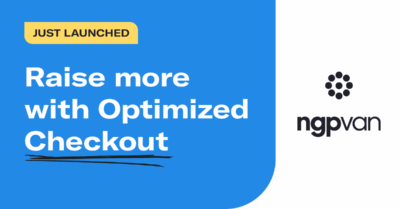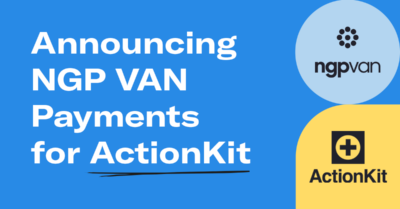How Spam Traps Destroy Email Programs (and Fundraising Metrics)
Spam traps are dangerous. They lurk on email lists, buried among legitimate email addresses, waiting to wreak havoc upon email campaigns and fundraising figures. In simple terms, spam traps are email addresses used by email service providers (ESPs) and anti-spam services to identify senders with poor data practices.

If you send emails to a spam trap, it can be a sign to ESPs that you have a non-opted-in and/or confirmed list, bought email addresses and/or appended data with email addresses, or, at best, that you have poor list hygiene practices. All of these factors will cause your deliverability rate (the rate at which your emails get to inboxes instead of junk folders or worse) to tank, with the rest of your email and fundraising metrics following in short order.
Spam traps have become a nuisance, shutting down numerous email programs, costing thousands in lost donations and millions email contacts. Fortunately, spam traps can be identified. These are the two main types:
1. Pristine Traps (AKA True or Honey Pot Traps)
Pristine spam traps are the worst of the worst. These are email addresses that have never been used as a real, active email address – they can only be added to a list by either a misspelling, being scraped from a website, or by being inadvertently bought. Sending to one of these email addresses will likely get your email program immediately shut down, or cause significant deliverability issue.
2. Recycled Spam Traps
These addresses were once active addresses that were used by individuals. They then became inactive, at which point the addresses become hard-bounces and should be removed. After a certain period they are then turned into a spam trap.
The impact of spam traps can vary between ESPs, and how many and what type of spam trap you trigger.
Impacts can include:
- Lowering your sending reputation, which can impact your inbox placement (among other things)
- Blacklisting of your domain or IPs you send from
- ISPs blocking, throttling, or quarantining email you send
- Heavily reduced open and click rates
How are spam traps most likely to wind up on your list?
The most common way for spam traps to find their way into your email list are through bad practices such as purchasing lists, appends (using existing supporter data to harvest email addresses), or scraping email addresses from websites. Other risky practices include using affiliate partners (sending email on behalf of another campaign or organization, and vice versa), list swapping, failing to have email address validation on forms, poor hard and soft bounce processing, stale/old addresses, or by importing a personal address book.
Campaigns are more likely to encounter recycled spam traps than pristine ones. As your list ages, inevitably, some of the addresses on it will be converted into traps. During the period when email addresses are inactive, most ESLs will send hard bounce responses back, allowing you to identify and remove them (happily for our clients, we do this for them!)
However, if you’re re-uploading addresses that have bounced, or using software that ignores (or allows you to ignore) hard bounces, you can expect increasingly severe deliverability issues.
How to Avoid Spam Traps
Campaigns tend to have the most issues with lists that are imported or swapped, or by failing to confirm email addresses. Thankfully, with good data practices and some common sense, you can avoid most deliverability issues. Here’s how to avoid falling into a spam trap:
Use Confirmed Opt-Ins
There is only one guaranteed way a spam trap won’t wind up on an organically built email list: using confirmed opt-ins. This is when an email is sent to a new subscriber asking them to click a link. If the new subscriber chooses not to click that link and confirm their subscription, they will be unsubscribed. Spam traps don’t click links… usually. If you confirm opt-in everyone, no matter how they get on your list, then you’ll be pretty safe when it comes to spam traps being added to your list through new supporters signing up.
Monitor + Clean Your Lists
The next best way to avoid spam traps is to pay attention to the statistics of your list growth, and watch for the source of “user unknown” type hard-bounces, complaints, and unsubscribes.
If you notice a high volume from certain webpages, hand typed imports, offline list building activities, etc., it’s good to explore that data further and figure out how and why these might be an issue. It’s also best to pay attention to the interaction you get on emails sent to new individuals to your list.
If users on your list show no interaction for an extended period of time, you might want send them a last-ditch email to re-engage them, and then unsubscribe them yourself if they stay inactive. After all, if they aren’t engaging with you, they are at best dead-weight, and at worst a spam trap.
Employ a Welcome Series
A series of welcome emails for new supporters or subscribers is another good way to identify spam traps. A welcome series reminds individuals how they got on your list and what they can expect, effectively easing them into your email program. Again, with a welcome series, like list growth in general, you should monitor hard bounces, complaints, and unsubscribes to explore the effectiveness of your list acquisition practices.
Never Ever Buy Lists. Ever.
If you take nothing away from this blog post, remember this: while purchasing lists doesn’t guarantee that you’ll have issues, the risks you run of sending to a pristine spam trap are high, and when problems do arise, there’s little you can do to solve them. With list purchases (much like appends and swaps) you are trusting the source of the data to follow best practices. Email providers exact high penalties, and the effects can take months to fix, during which your email program can suffer greatly.
Like most things in life, there are no shortcuts or easy routes to avoiding spam traps. The best way to run a good, high-deliverability email program that puts your emails front and center in people’s inboxes is to grow your list organically, stay engaged with your audience, and clean your lists of disengaged and unresponsive users. Buying, swapping, or uploading old lists will lead to trouble – and you don’t want to be responsible for trashing one of your campaign’s most important assets.



